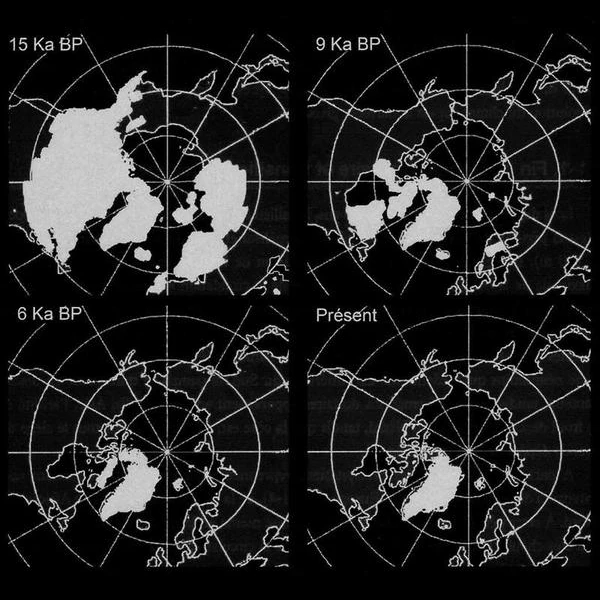
Our planet is not immutable in its orbit around the Sun. It follows a complex, subtle, yet regular celestial choreography that profoundly influences its climate over geological timescales. These orbital variations, known as Milankovitch cycles, act as the natural metronome for long-term climate change.
The theory developed by Milutin Milankovitch (1879-1958) identifies three main movements of the Earth that alter the distribution of solar energy received at its surface:
The shape of Earth's orbit varies between nearly circular (eccentricity of 0.0005) and slightly elliptical (eccentricity of 0.0607) over cycles of approximately 100,000 years and 400,000 years. When the orbit is more elliptical, the difference in Earth-Sun distance between perihelion and aphelion is more pronounced, affecting the intensity of the seasons.
The tilt of Earth's rotational axis oscillates between \(22.1^\circ\) and \(24.5^\circ\) over a cycle of about 41,000 years. A greater tilt increases seasonal contrast, with hotter summers and colder winters, especially at high latitudes.
Earth's rotational axis describes a slow conical movement, similar to a spinning top, completing a cycle every 25,800 years. This phenomenon changes the position of the seasons in Earth's orbit, determining whether the northern hemisphere experiences summer when Earth is closest to or farthest from the Sun.
The small differences observed in the three Milankovitch cycles are not sufficient on their own to explain climate variations. However, each provides an initial and periodic impulse that can be amplified by feedback mechanisms in the Earth system.
Milankovitch cycles provide the synchronization signal, like a metronome setting the rhythm. But the orchestra that produces the climatic symphony (major temperature variations) consists of internal feedback mechanisms of the Earth system, particularly ice albedo and greenhouse gases.
The cycles of Earth's orbit only provide the initial impulse, and the climate system, with its powerful feedbacks, does the rest to create the ice ages and interglacial periods we know.
N.B.:
The precession of the equinoxes is a slow change in the orientation of Earth's rotational axis, comparable to the movement of a spinning top, completing a full cycle every 25,800 years.
| Orbital Parameter | Approximate Period | Amplitude of Variation | Main Climatic Effect |
|---|---|---|---|
| Eccentricity | 100,000 and 400,000 years | 0.0005 to 0.0607 (ellipticity) | Modifies the global seasonal amplitude |
| Axial Tilt | 41,000 years | 22.1° to 24.5° | Controls the intensity of the seasons |
| Precession | 25,800 years | Change in axial orientation | Determines which hemisphere has summer at perihelion |
Source: NASA Climate - Milankovitch Orbital Cycles and NOAA - Milankovitch Cycles.
The combination of these three cycles creates orbital configurations that either favor or hinder the formation of ice sheets. Periods when northern hemisphere summers are cooler allow snow to accumulate year after year, initiating ice ages. Conversely, warmer summers cause ice to melt and glaciers to retreat.
Milankovitch's theory, initially proposed in the 1920s, found strong confirmation through the study of ice cores and marine sediments. Analysis of oxygen isotope ratios in foraminifera and polar ice reveals climate variations that correspond remarkably well to the calculated periods of orbital cycles.
Milankovitch cycles operate on timescales of tens to hundreds of thousands of years. The current global warming, however, is occurring at an unprecedented rate in recent geological records and is primarily attributed to human activities. Orbital cycles provide the natural context in which Earth's climate evolves, but they cannot explain the rapid change observed since the industrial revolution.